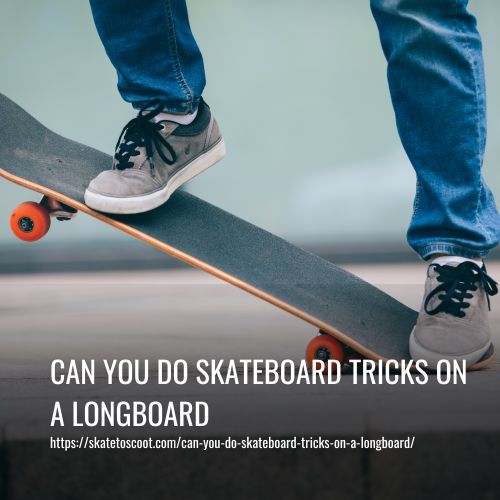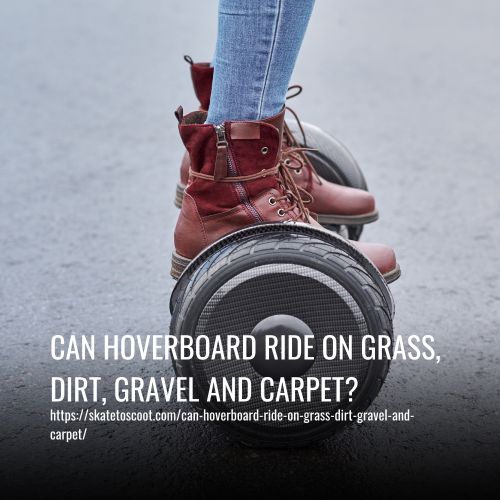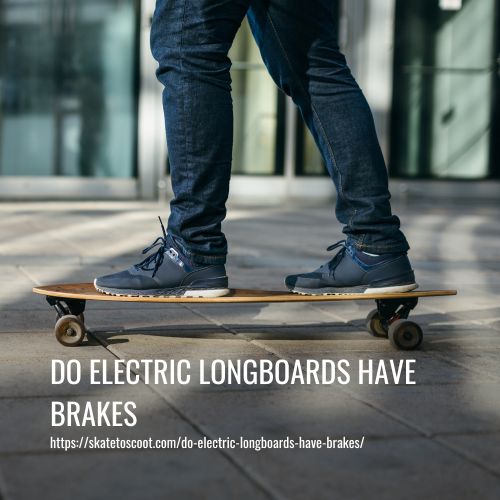As an Amazon Associate we earn from qualifying purchases.
Yes, it is possible to do skateboard tricks on a longboard, although there are some key differences between the two boards that should be considered. Skateboards are specifically designed for performing tricks and technical maneuvers, with their smaller size, narrower deck, and harder wheels allowing for more precise control and maneuverability. On the other hand, longboards have a longer and wider deck, providing greater stability and balance, making them better suited for cruising, downhill riding, and dancing.
When it comes to tricks, skateboards, and longboards have different common trick differences. Skateboard tricks often involve ollies, kickflips, heelflips, and many other flip and manual tricks. These tricks require the rider to pop the tail of the skateboard, perform a kick or flip motion with their feet, and maintain balance and control throughout the trick.
Longboard tricks, on the other hand, are usually more focused on carving, sliding, and dancing. Riders can perform slide tricks by initiating a slide with their wheels and controlling the drift. Dancing tricks involve combining footwork and body movements to create a fluid and stylish routine.

What Is The Difference Between A Skateboard And A Longboard?
Skateboards and longboards may appear similar, but there are significant differences between the two when it comes to their origins, designs, and intended purposes.
Skateboards, first gaining popularity in the 1950s, were designed as a means of recreationally riding and performing tricks in skate parks or on the streets. They typically measure around 30 inches in length and have a narrower deck, allowing for maneuverability and precise control. Skateboard wheels are smaller and harder, making them well-suited for performing tricks and slides on various surfaces.
In contrast, longboards evolved from traditional skateboards and have a different purpose. Originating in the 1960s in Hawaii, longboards were initially used for downhill racing and long-distance cruising. They are typically longer, ranging from 33 inches to over 60 inches, with a wider and more stable deck. Longboard wheels are larger and softer, providing smoother rides and better grip while cruising or carving.
Basic Trick Differences
When it comes to basic trick differences, skateboards, and longboards have distinct characteristics. Skateboard tricks typically involve ollies, kickflips, heelflips, and various flip and manual tricks, requiring the rider to pop the tail, flip or kick with their feet, and maintain control.
On the other hand, longboard tricks often focus on carving, sliding, and dancing. Slide tricks involve initiating a drift by using the wheels while dancing tricks combine footwork and body movements for a stylish routine.
Despite these differences, there are popular tricks that can be performed on both boards, including manuals and shove-its, which require balance and quick foot movements. It is important to adapt your technique to the specific characteristics of each board while maintaining control and balance throughout the trick.
1. Types Of Skateboard Tricks
Skateboarding is a versatile sport that offers endless possibilities for executing various types of tricks on a traditional skateboard deck. From basic riding tricks to advanced flip tricks, skateboarders can push the boundaries of their skills and creativity.
Basic riding tricks are the building blocks of skateboarding. These tricks include ollies, kick turns, and manuals. Ollies involve popping the tail of the skateboard to jump and bring the board with you. Kickturns are executed by using the tail and front trucks to pivot in different directions. Manuals are tricks that involve balancing on two wheels without any contact with the ground.
As skateboarders progress, they can explore a wide range of more advanced tricks. Flip tricks, such as kickflips, heelflips, and varial flips, involve spinning the skateboard in various directions while executing a trick. These tricks require precise foot placement, quick flicks, and a solid understanding of board control.
2. Types Of Longboard Tricks
When it comes to longboard tricks, there is a wide range of options for riders of all skill levels. Whether you are just starting out or have been riding for years, there is always something new to learn and master. Here are a few types of longboard tricks to explore:
- Beginner Tricks: These tricks are perfect for riders who are new to longboarding. They include basic maneuvers such as carving, foot braking, and pushing with one foot. These tricks are easy to learn and require minimal skill.
- Intermediate Tricks: Once you have gained some confidence and control on your longboard, you can move on to intermediate tricks. These tricks include powerslides, both standup and hands down, and slides like the Coleman slide. These tricks require more skill and balance.
- Advanced Tricks: As you become more experienced, you can challenge yourself with advanced tricks. These tricks include dancing tricks like cross steps, pirouettes, and manuals. There are also freestyle tricks like shuvits, tiger claws, and boneless. These tricks require a high level of proficiency and board control.
- Combination Tricks: Some longboard tricks are a combination of different styles and influences. These tricks should only be attempted once you have mastered the individual tricks that make up the combination. Examples of combination tricks include kickflip to manual, 180 to slide, and handstand to boneless. These tricks require a mix of freestyle longboard tricks and advanced skills.
Remember, safety is always the top priority when attempting any longboard trick. Make sure to wear proper protective gear and practice in a safe and controlled environment. Happy shredding!
Common Trick Differences Between The Two Boards
When it comes to performing tricks, there are several key differences between skateboards and longboards. These differences are primarily due to variations in board shape, size, flex, and wheelbase. Understanding these distinctions is essential for riders looking to execute tricks on either type of board.
Firstly, the shape of the board plays a significant role in trick execution. Longboards typically have a longer and wider deck compared to skateboards, providing additional stability during maneuvers. On the other hand, skateboards tend to have a shorter and narrower deck, allowing for quicker and more responsive movements.
Size is another factor to consider. Longboards are generally larger and heavier, making them less suitable for certain technical tricks that require a lighter and more compact board. Skateboards, with their smaller size and lighter weight, excel in performing flips and aerial maneuvers.
Flex also differs between the two boards. Longboards often have more flex, thanks to their construction and materials, which provides a smoother ride and better absorption of vibrations. This flexibility can affect the execution of skateboarding tricks that typically require a stiffer board for stability.
Popular Tricks That Work On Both Skateboards And Longboards
Skateboarding and longboarding offer a plethora of tricks that can be performed on both types of boards, showcasing the versatility of these sports. Despite their differences in design and functionality, there are several maneuvers that can be successfully executed on both skateboards and longboards.
One such trick is the kickflip. This classic trick involves using your foot to flick the tail of the board and make it flip neatly under your feet. Whether you’re on a skateboard or a longboard, the kickflip can be achieved by mastering the right technique and timing, showcasing your skills and control.
Another trick that translates easily between both types of boards is the manual. Balancing on either the front or back wheels while rolling gives you a sense of control and style. The long wheelbase of a longboard offers stability and a solid platform for executing a manual, while a skateboard’s shorter wheelbase requires a bit more skill and precision to maintain balance.
The ollie is another trick that can be performed on both skateboards and longboards. By using a combination of popping the tail down and sliding your front foot up, you can lift the board into the air and perform various maneuvers. Regardless of the board you’re riding, the ollie allows you to jump over obstacles and add an element of creativity to your ride.
Favorite Trick Differences For Each Board Type
Skateboarding and longboarding have their own favorite tricks that are influenced by the design and functionality of each type of board. While both sports share some similar tricks, there are key differences that cater to the specific preferences of skateboarders and longboarders.
Skateboarders often favor technical freestyle tricks that involve flips, spins, and grinds. The smaller size and lighter weight of a skateboard allow for more agility and precision, making it ideal for flip tricks like kickflips, heelflips, and varial flips. Skateboarders also excel in performing grinds like nose slides, tail slides, and board slides on various obstacles, showcasing their skills and creativity.
On the other hand, longboarders tend to enjoy more fluid and graceful tricks that take advantage of the longer and wider shape of their boards. Dance tricks, which involve incorporating dance-like movements on the board, are popular among longboarders. This includes cross-stepping, pirouettes, and fancy footwork. Longboarders also gravitate towards freestyle trick sessions where they can showcase their creativity through a mix of freestyle-type tricks like manuals, slides, and spins.
Advanced Tricks for Skateboarding and Longboarding
Once you’ve mastered the basic tricks and gained confidence in your skateboard or longboard, you may be ready to take your skills to the next level. Advanced tricks require a combination of technique, balance, and practice. Whether you’re cruising through the streets or tackling obstacles at the skatepark, these advanced tricks will push your abilities and impress onlookers.
Upper Body Moves To Execute Difficult Tricks On Both Boards
When it comes to executing difficult tricks on both skateboards and longboards, the upper body plays a crucial role. Proper positioning and control of the upper body can greatly enhance stability, balance, and maneuverability during trick execution.
One important aspect of upper body movement is arm placement. Whether it’s keeping the arms extended for balance or using them to initiate and control the trick, having a strong awareness of arm placement is essential. Additionally, shoulder rotation can aid in generating power and adding style to tricks. By twisting the shoulders, riders can generate momentum and torque, allowing for more fluid and powerful trick execution.
In addition to arm and shoulder movements, torso twisting plays a significant role in performing advanced tricks. By twisting the torso in the direction of the track, riders can create an additional level of rotation and control. This coordination of upper body movements with lower body actions helps achieve a fluid and precise trick execution.
FAQs
Yes, you can definitely perform skateboard tricks on a longboard. Longboards are versatile and offer a wide range of possibilities for trick execution.
Manuals on a skateboard involve balancing on the two back wheels while keeping the front wheels off the ground. On a longboard, manuals are similar but may require more finesse due to their larger size. Variations of manuals, such as nose manuals, are also possible on both boards.
There are numerous tricks that can be executed on both skateboards and longboards, such as kickflips, ollies, shuvits, and board slides. The main difference is the style and execution due to the different characteristics of the boards.
Generally, for learning tricks on a cruiser board, a mid-size range, around 30-34 inches, is ideal. This size provides a good balance between maneuverability and stability, allowing riders to perform various tricks with relative ease.
Conclusion:
Whether you’re a skateboarder or a longboarder, the answer is yes, you can do skateboard tricks on a longboard! It may take some practice and adjustment, but with determination and a bit of creativity, you can push the limits and showcase your skills on any board.
So, grab your longboard, hit the streets, and let your tricks take flight! Remember, the only limits are the ones you set for yourself. Keep shredding!
Amazon and the Amazon logo are trademarks of Amazon.com, Inc, or its affiliates.



